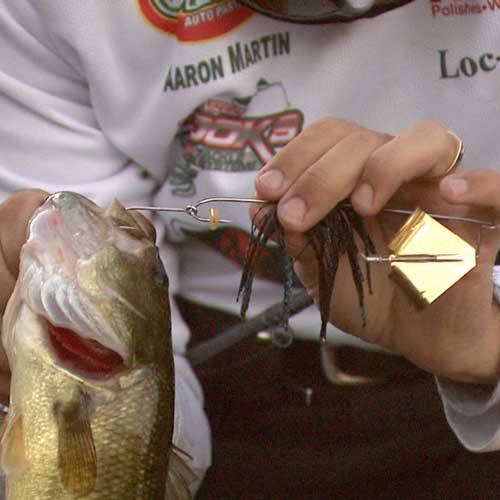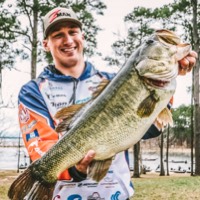- BassEdge.com - Pursue Your Passion
Taking ‘Em On Top By Aaron Martin
THE EDGE – Episode 241 – Charlie Hartley
October 1, 2016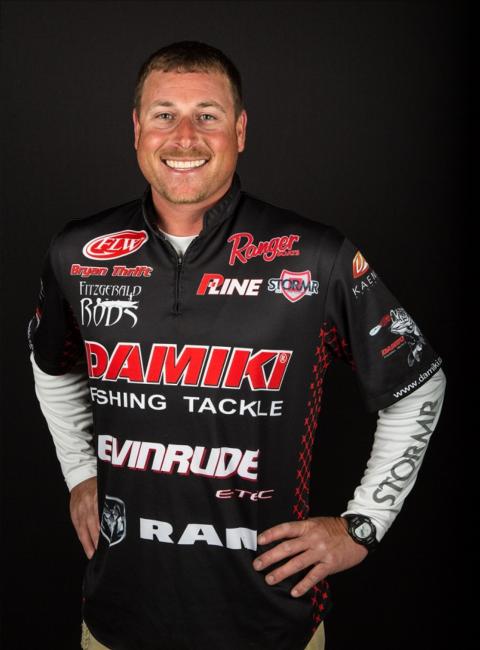
THE EDGE – Episode 242 – Bryan Thrift
October 15, 2016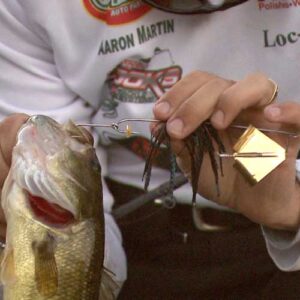
When anglers talk about their favorite ways of catching bass, baits like jigs, crankbaits and drop-shot rigs are likely part of the conversation, but almost everyone has topwaters somewhere near the top of their list.
With numerous types, sizes and styles of topwater lures on the market, an angler is inclined to find one to his liking. Professional touring pros Sean Hoernke, Ken Brodeur and Lisa Craig all have favorite surface baits and favorite techniques for fishing them.
When To Use
“Post-spawn is one of the primary times for topwater,” FLW pro Sean Hoernke said. “When the bass are done spawning, the bluegill are next and bass will hang around shallow to feed on the bluegill.”
Sean relies mainly on prop baits or chugging baits that resemble blugills. One of his favorite baits for targeting bass in less than five feet of water is a Pop R. He searches out little points and pockets with hard bottoms. Bluegill will spawn on the same shorelines as bass. Hoernke said that bluegill beds resemble a lot of little bass beds close together and whenever he locates them, explosive action is sure to follow.
“One of the biggest misconceptions is that topwater does not work all day long,” Hoernke said. “The month of May is the best time of year for an all day topwater bite.”
Some of his most successful times for both size and numbers have come between noon and 2 p.m.
“After the month of May, and the water begins warming, is when it begins leaning toward a morning or evening bite.”
B.A.S.S. Elite pro Ken Brodeur fishes topwaters mainly in the early morning unless he has an overcast day. He has experienced topwater success leading into the spawn.
“I really like using a topwater to locate bedding fish,” he explained. “Often the fish react, but won’t eat it. However, they have already given themselves up.”
Brodeur will then cast a soft plastic, catching the fish without having spooked it off of the bed.
For lakes like Clarks Hill, Ken has witnessed unbelievable surface action as soon as the bass move off of the bed. Although he does rely on a series of different baits, his weapon of choice is the buzzbait. The buzzbait allows him to cover a lot of water, and fish wood and other cover in search of aggressive bass.
Where To Use
On stained bodies of water like Dardanelle in Arkansas, bream beds are seldom seen with the naked eye, but Hoernke still exhausts all doubt on proper looking banks. If he catches a bass under these circumstances he is confident that more are lurking in the shadows. As the spawn fades, he begins re-tracing the movement of bass to their pre-spawn staging areas knowing that bass follow the same routes that brought them into the shallows.
For clear water impoundments like that of Lake Hamilton, bass will suspend off of points or over deep structure. Applications such as this warrant walking baits due to their sheer size and the commotion they make on the surface.
“I really like walking baits and their effectiveness in drawing bass from a farther distance,” Hoernke said.
WBT pro angler Lisa Craig lives for dirty water and the chance to sling a buzzbait on a cloudy and calm morning. Relying on patience, she relies on stumps, logs and grass tops to work her magic.
“One of my most memorable experiences was as a co-angler on a boiling hot day on the edge of a channel, working a timber pile with grass,” Craig recalls. “My pro was relentless in his efforts, throwing it all day bumping logs as well as lay-downs and it paid off handsomely.”
She attributes the appeal of a buzzbait to the noise produced by the blades as well as the ability to work it tight to cover. It is also important to work the bait as slowly as possible while still keeping it on the surface. Often, Craig will intentionally bang the bait into cover trying to entice a reaction strike.
Top Gear
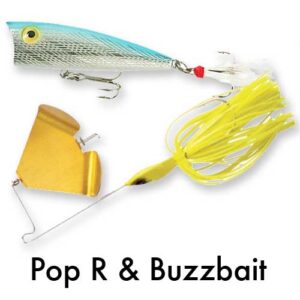
Choosing the right gear for the job is vital. Not only must an angler be able to work the bait effectively, he must also get the hook set and get the fish to the boat.
Most anglers prefer monofilament line because its buoyancy helps keep the bait on the surface. While Hoernke prefers 10-to 12-pound test for clear water and 15- to 17-pound test for stained water, Brodeur relies mainly on 20-pound line.
Craig says anglers often have a tendency to pull the buzzbait out of the fish’s mouth upon hook set. To alleviate this problem, she relies on a 6-foot, 6-inch medium-heavy action rod with a fast tip to allow a slower energy transfer.
When using popping baits, Hoernke opts for a light action rod to help compensate for the lost casting distance and handle aggressive bass. For surface frogs and walking baits he prefers a 6-foot, 6-inch medium action rod to apply maximum wrist action without fatigue.
Additional considerations include lure size, color and bait modifications. Brodeur primarily sticks with gold blades and a fire-tiger skirt for dirty water and chartreuse and white for clear water. Craig on the other hand looks to the sun. On bright days, she likes light colors, and but on an overcast or cloudy day she ties on a darker color.
Brodeur throws a 3/8 oz. buzzbait more times than not, but he does vary occasionally by taking a blade off of a ½ oz. model and placing it on a ¼ oz. body. This smaller-profile bait enables him to retrieve the lure much slower and still keep it on the surface. He will also change the cup of the metal blades to alter the sound of the bait.
In the right conditions, topwater baits can pay off. Pay close attention to bass behavior, target structure and use the right gear to help take ‘em on top.

